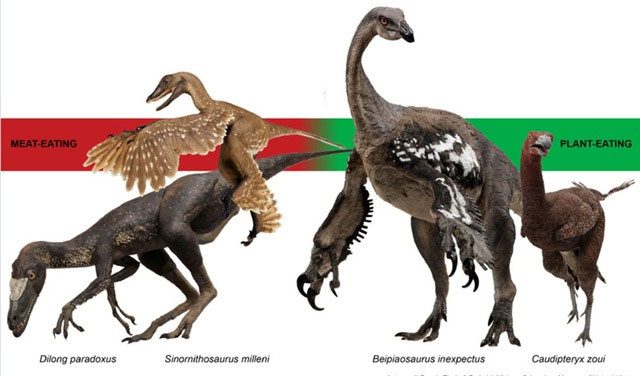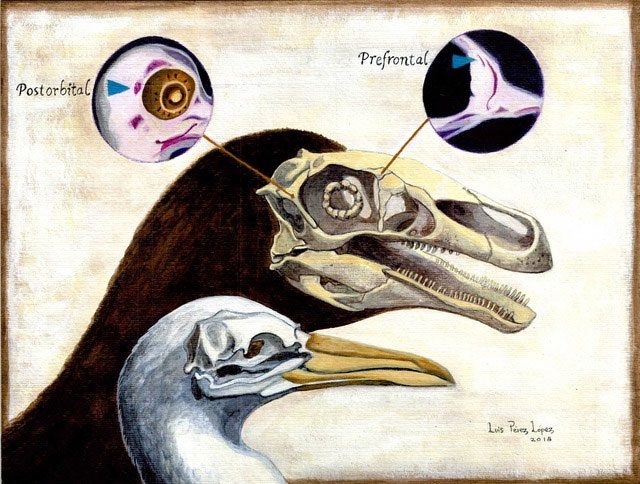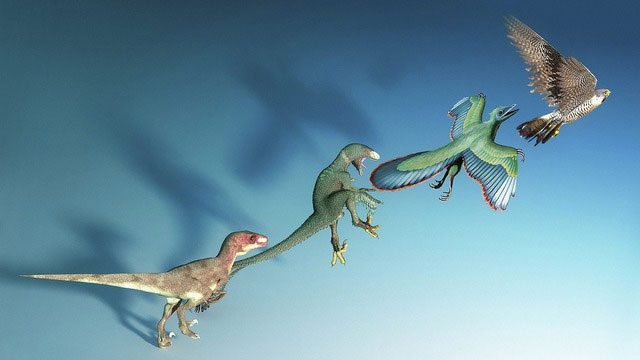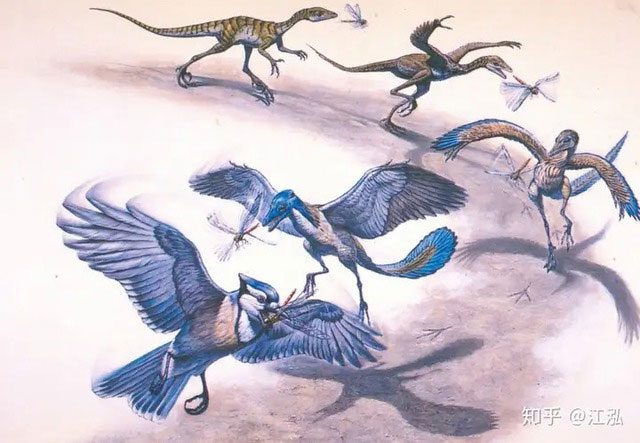Today, our planet is home to many types of birds, all of which possess beaks – essentially a layer of epithelium covering the upper and lower jaws.
When discussing the evolutionary history of living organisms, one of the most prominent and recognizable features of birds is the beak – this special structure not only aids in feeding, singing, and nest building but also serves as evidence of the miraculous evolutionary processes that have occurred over millions of years.
From the perspective of evolutionary biology on Earth, birds are not the only group with keratinized beaks. Some species of dinosaurs, as well as nearly all species of flying reptiles and certain pre-dinosaur lizards, evolved beak-like structures.

Modern birds are believed to have originated from theropod dinosaurs, a group of bipedal carnivorous dinosaurs that moved agilely and had long tails. Over millions of years of evolution, anatomical and physiological changes transformed theropod dinosaurs into the birds we see today. One of the most notable characteristics of birds is the toothless beak. However, their dinosaur ancestors had sharp teeth for catching prey and tearing flesh. So, why did birds evolve beaks instead of retaining teeth?
Scientists have discovered that birds did not suddenly appear out of nowhere; they are descendants of a group of dinosaurs that originated from theropod dinosaurs. This means that birds and dinosaurs share a common ancestor, which is supported by fossils exhibiting bird-like characteristics in their bone structure and feather systems.
Compared to the mouths of other animals, the beak structure is clearly stronger, less prone to damage, requires less energy, and can adapt to various feeding methods. Of course, this is just one advantage of the beak, which may also explain its multiple appearances throughout the history of life’s evolution.

The evolution of the beak contributes to the extraordinary diversification of birds. Beaks come in various shapes and sizes depending on the bird species and their dietary needs. This allows birds to adapt to diverse habitats and food sources.
Some paleontologists view the emergence of the beak and the disappearance of teeth as a significant evolutionary event leading to flight. Birds need to have the lightest bodies possible for efficient flying. Beaks, primarily made of keratin (a type of protein), are much lighter than jawbones and teeth, helping to reduce the overall weight of birds. Additionally, birds need to conserve energy for flying. Heavy teeth and complex jaw muscles require a lot of energy to operate, whereas beaks are lighter and simpler, which helps save energy.
However, recent studies by paleontologists have shown that the loss of bird teeth occurs during embryonic development to shorten the incubation period and increase successful birth rates. Thus, the idea that teeth disappeared to enable flight has been heavily challenged.
The emergence of the beak structure in birds actually predates the disappearance of teeth. Based on the fossils discovered so far, ancient birds had keratinized beaks from the very beginning of the Cretaceous period, while contemporary or even earlier dinosaurs still had teeth . The emergence of horned dinosaurs is not directly evolutionarily related to the beak structure in birds.

Although birds evolved from dinosaurs, each step of their evolution reflects unique adaptations to their habitats and survival challenges. The bird’s beak is not just a versatile tool but also a symbol of a remarkable evolutionary journey, demonstrating how nature selects and refines each species to survive and thrive in this increasingly diverse world.
Although the evolutionary process is purposeless and random, there must be reasons for the widespread appearance of keratinized beaks in birds. This may relate to the ecological niches that birds filled during their early days. Their small bodies primarily fed on insects, worms, and fish, foods that do not require a mouth capable of biting and chewing, making the keratinized beak the best option.
Additionally, the beak also helps birds easily crush and swallow food compared to teeth. This is particularly important for seed-eating birds, as hard-shelled seeds are difficult to chew with teeth; sharp beaks allow birds to easily catch and peck insects, an important food source for many bird species; some birds, like waterfowl, use their beaks to filter food from the water. Flat beaks with keratin plates help birds filter out tiny organisms from the water without swallowing excess water.
Some birds have brightly colored beaks and unique shapes. These features are thought to play an important role in attracting mates. Birds with beautiful and attractive beaks may have greater reproductive opportunities, leading to the transmission of genes to future generations.
Thus, this structure has become a standard characteristic of birds in subsequent evolutionary processes.

The evolution of the beak in birds is a prime example of how anatomical traits can change to adapt to new habitats and lifestyles. The beak not only helps birds fly more easily but also provides numerous other benefits such as efficient foraging, caring for young, communication, and courtship. Thanks to the evolution of the beak, birds have become one of the most diverse and successful groups of animals on Earth.


















































